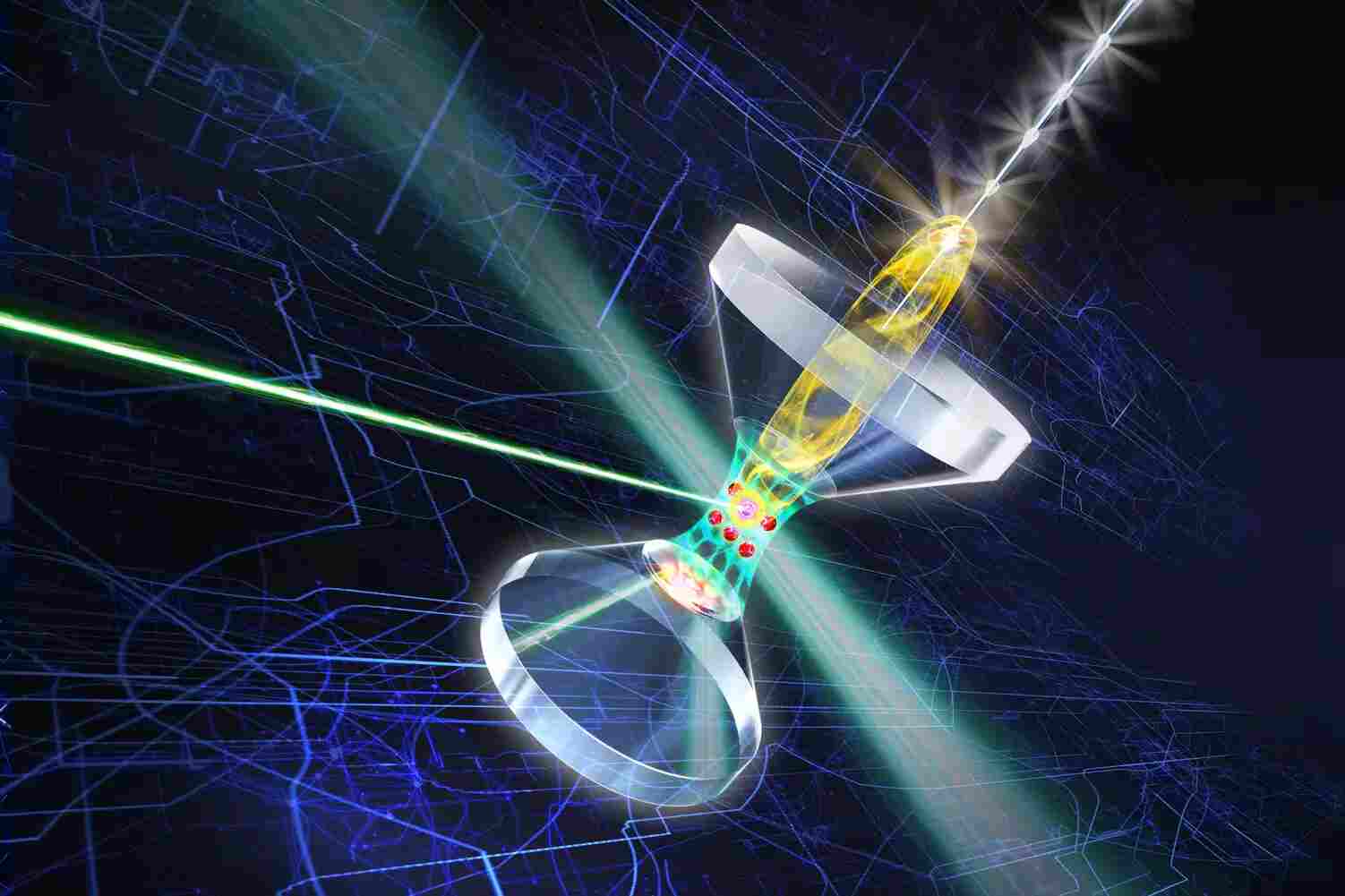THE LATEST
Germany makes strides in quantum networking by securely propagating entanglement at the push of a button

Physicists at the Max Planck Institute of Quantum Optics in Germany have made a remarkable breakthrough in the field of quantum information science. They have shown the secure propagation of entanglement in a quantum network with unprecedented efficiency. The team, led by Gerhard Rempe, Director at the Institute, used laser tweezers in optical resonators to entangle resting quantum bits (qubits) with flying qubits in the form of photons, advancing quantum communication and networking.
Entanglement, famously referred to by Einstein as "spooky action at a distance," has become an essential tool in quantum information science. It serves as the fundamental resource for quantum computers and is crucial for the transmission of quantum information in a potential quantum network. Despite its significance, entanglement is highly sensitive, posing a substantial challenge in entangling resting qubits with flying qubits instantaneously.
The team's pioneering approach involves confining atoms between two nearly perfect mirrors, providing a reliable interaction with photons as flying qubits. Using optical tweezers, the scientists have demonstrated proficient individual control of up to six atoms, entangling each with a photon. They have successfully achieved atom-photon entanglement generation with nearly 100 percent efficiency, a groundbreaking accomplishment in the distribution of entanglement across a quantum network. The results of their work have been published in the prestigious journal Science, signifying the significance and impact of their achievement.
The implications of this work extend beyond mere theoretical significance, delving into the practical applications of quantum information transmission over long distances and the construction of more potent quantum computers. The establishment of efficient interfaces between resting qubits and qubits in motion is essential for both long-distance quantum communication in a future quantum internet and the consolidation of a distributed network of qubits for advanced quantum computing.
The team's approach, utilizing ultracold rubidium atoms trapped between precision mirrors as an optical resonator, holds inherent advantages for the future of quantum networking. By enabling highly efficient atom-photon interaction and controlled photon transmission through an optical fiber, their method provides a promising foundation for the establishment of a robust and reliable quantum network.
Regarding the challenge of maintaining entanglement over longer distances, the team has devised a solution through the implementation of "multiplexing" – a technique borrowed from classical information technology to enhance transmission robustness. Multiplexing not only holds promise for secure transmission in a quantum internet over significant distances but also for the creation of a local quantum network, critical for the formation of distributed, powerful quantum computers.
A notable technical feat accomplished by the team has been the development of a technique to load and individually address several atoms in a resonator using optical tweezers. This precision allows for the entanglement of multiple atoms with individual photons, setting the stage for the implementation of multiplexing with unparalleled efficiency and reliability.
The scalability of this approach is also underlined, with the team's estimations suggesting the potential control of up to 200 atoms in a resonator, marking a significant stride towards the realization of a powerful quantum computer. With the capability to maintain entanglement with a near 100% success rate, the prospect of a network consisting of many resonators, each hosting 200 atoms as resting qubits, becomes increasingly viable, signifying a bold leap towards the future of quantum technology.
In summary, the work led by Gerhard Rempe and his team at the Max Planck Institute of Quantum Optics represents a pivotal achievement in securely propagating entanglement in a quantum network. With far-reaching implications for quantum information transmission and the potential establishment of more powerful quantum computers, their research encompasses diverse perspectives ranging from fundamental quantum theory to practical quantum technology, charting a path towards a future enriched by quantum networking and computation. The outcomes of this work not only contribute significantly to the scientific understanding of quantum phenomena but also hold the potential to revolutionize the landscape of information technology, sparking a renaissance in secure and efficient data transmission and processing.

